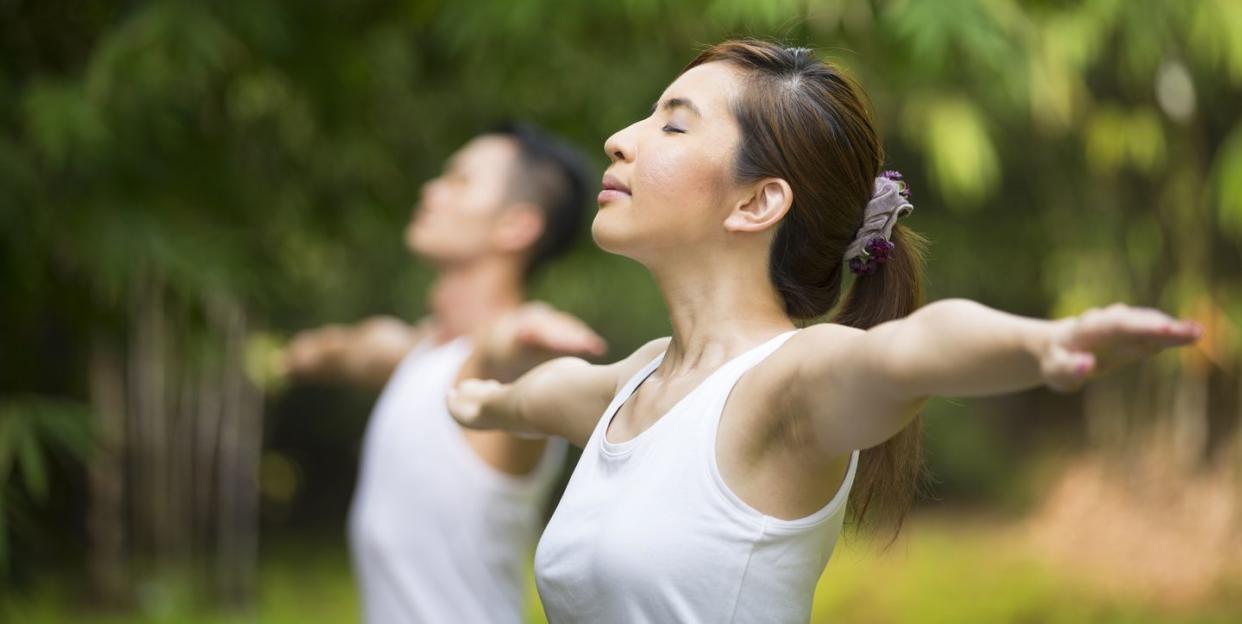Everything to Know About Tai Chi for Beginners, According to Experts

You may think tai chi is only for the senior set, especially if you’ve seen groups of retirees in the park with their arms and legs moving artfully and unhurriedly. But the martial art is becoming popular among younger adults too. “We call our students seniors in training, because the more you do it, the more it will prepare you as you age,” says David Goldberg, leader of the Tri-State Branch of the Taoist Tai Chi Society. “You see people moving slowly. But it’s actually not slow at all; there’s so much that goes on in the body and mind.” Taoist tai chi is a modified, health- focused form; it adheres to the belief that people cannot be steady on their feet without first being balanced internally. Here, Goldberg explains how to achieve both.
First, what is tai chi exactly?
Tai chi is a Chinese martial art composed of a series of movements. There are several different styles, and within them are several forms. Some martial arts are only about aggression—you might, say, learn how to hurt a mugger or break a board. Taoist tai chi is also about spirituality, community, and what happens on the inside.
What happens during a tai chi class?
We do several 16- to 18- minute sets of 108 movements, with about a 15-minute break in the middle of a 90-minute class. Sets are broken down into chunks to explore different ways the body works, and during the break we drink tea and internalize everything that’s happening. We teach with very little talking—we want you to watch, follow, and fully feel the movement of your body. The constant expansion, contraction, and rotation of the spine exercises all connective tissue and moves fluids through the lymphatic system to help flush out toxins.
How does tai chi improve balance?
As we get older, we start to stiffen up. When you get up in the morning and hurt, you stop moving. Immobility only causes more immobility. Tai chi helps you keep moving. A Harvard University study found that doing it helped people maintain strength, flexibility, and balance. Some seniors even say that since doing tai chi, they’ve stopped falling down after they trip. It’s also great for those with conditions like Parkinson’s and rheumatoid arthritis.
Who can benefit from tai chi?
Anyone can, and everyone is going to get something different from it—physically, mentally, and spiritually. You can be in any level of physical shape to do it, but it’ll change how you walk up and down stairs, get out of a chair, walk down the street. Because you can do it standing up or supported, even people who are in wheelchairs or use walkers can do tai chi and get the same whole-body effect.
Can I try tai chi at home with an instructional video?
We encourage taking classes so an instructor can make sure you’re not harming your body in any way. Once you’ve been practicing for a while, you can do movements anywhere. To learn more about Taoist tai chi and find classes near you, visit taoisttaichi.org.
This article originally appeared in the May 2020 issue of Prevention.
Support from readers like you helps us do our best work. Go here to subscribe to Prevention and get 12 FREE gifts. And sign up for our FREE newsletter here for daily health, nutrition, and fitness advice.
You Might Also Like

